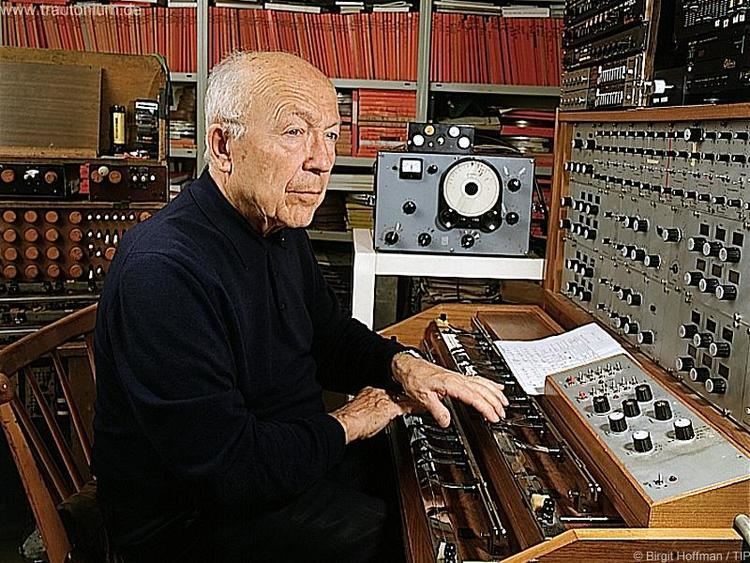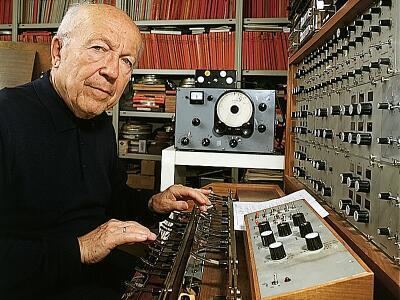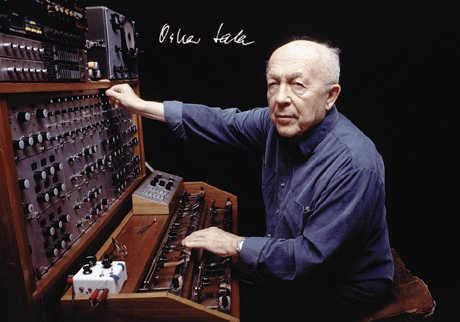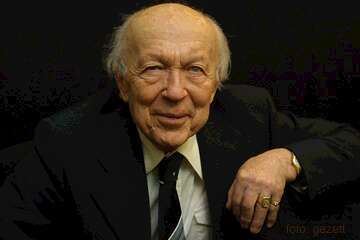Name Oskar Sala | Role Composer | |
 | ||
Education Humboldt University of Berlin Albums My fascinating instrument, Elektronische Impressionen Awards German Film Award - Honorary Award Similar People Harald Genzmer, Paul Hindemith, Hugo Niebeling, Erwin Halletz Height 5 ft 7 inches Weight 68 kg Eye Colour Blue Hair Colour White Net Worth 15 million Born 18 July 1910 (aged 91) Greiz, German Empire Died 26 February 2002 (aged 91) Berlin, Germany | ||
Oskar Sala (18 July 1910 – 26 February 2002) was a 20th-century German physicist, composer and a pioneer of electronic music born in Greiz. He played an instrument called the Trautonium, a predecessor to the synthesizer.
Contents

Studies

Sala studied piano and organ during his youth, performing classical piano concerts as a teenager. In 1929, he moved to Berlin to study piano and composition with composer and violinist Paul Hindemith at the Berlin conservatory. He also followed the experiments of Dr. Friedrich Trautwein, at the school’s laboratory, learning to play with Trautwein's pioneer electronic instrument, the Trautonium.

On 20 June 1930 Sala and Paul Hindemith gave a public performance at the Berliner Musikhochschule Hall called “Neue Musik Berlin 1930″ to introduce the Trautonium. Later Sala toured Germany with the Trautonium; in 1931 he was the soloist in a performance of Hindemith's Concert for Trautonium with String Quartet. He also soloed in the debut of Hindemith student Harald Genzmer's “Concert for Trautonium AND Orchestra”.
Sala studied physics at the University of Berlin between 1932 and 1935. He helped to develop the "Volkstrautonium", a Trautonium that Telefunken hoped to popularize. In 1935 he built a "Radio-Trautonium", and in 1938 a portable model, the "Konzerttrautonium".
Mixtur-Trautonium
In 1948 Sala further developed the Trautonium into the Mixtur-Trautonium. The Mixtur-Trautonium allowed for the first time in music history the execution of sounds which had only been known in theory since the Middle Ages, but were never actually playable. Sala's invention opened the field of subharmonics, the symmetric counterpart to overtones, so that a thoroughly distinct tuning evolved.
Sala presented his new instrument to the public in 1952 and would soon receive international licenses for its circuits. That same year, Harald Genzmer delivered the score to the first Concert For Mixtur-Trautonium And Grand Orchestra.
In the 50’s Sala also built the Quartett-Trautonium.
Film work
In the 1940s and 1950s he worked on many film scores. In 1958 he established his own studio at Mars film GmbH (4th incarnation) in Berlin. There he produced electronic soundtracks for such films as Veit Harlan's Different from You and Me (1957), Rolf Thiele's Rosemary (1959), and Fritz Lang's Das Indische Grabmal (1959).
He created the non-musical soundtrack for Alfred Hitchcock's film The Birds. He received many awards for his film scores, but never an Oscar. He also did much work on German commercials, most notably one referred to as HB's little man.
He was an honorary Senator of Berlin.
